A hotel rooming list is a document which outlines accommodation arrangements for group bookings. It will include names, room assignment details, arrival and check-out dates, special requirements and more.
Rooming lists are important for helping hotels to prepare for a group arrival and maintain guest satisfaction. Group bookings may be large and complex and a rooming list can provide clarity and help with personalization.
In this article, you can fully explore the role of a hotel rooming list, examine the most crucial components and learn how to optimize these documents and related systems to enhance operational efficiency.
Table of Contents:
- What is a Hotel Rooming List?
- Why Are Hotel Rooming Lists Important?
- Key Components of an Effective Hotel Rooming List
- Step-by-Step Hotel Rooming List Management
- Maximizing Efficiency with Hotel Rooming List Optimization
- The Essential Best Practices for Hotel Rooming Lists
- Key Challenges and Solutions in Rooming List Management
- Understanding the Main Hotel Room Categories
- Creating a Hotel Room Maintenance Checklist
What is a Hotel Rooming List?
A hotel rooming list is a document, typically stored digitally, which outlines important details about a group booking. This includes a breakdown of each individual guest and their specific accommodation arrangements.
The document will cover key details, like check-in and check-out dates and the type of hotel rooms each guest has booked. It may also include billing instructions and individual requirements for guests.
Rather than managing all of the information for a group booking separately for each guest, a rooming list allows your hotel to take a more collective view of the booking and manage it more holistically.
Why Are Hotel Rooming Lists Important?
A hotel rooming list is important because it provides a single source of truth for a group hotel booking. The document can be easily referred to and used to understand the full circumstances and arrangements.
Group bookings can be complex, with some guests sharing rooms and others occupying rooms on their own. There may be multiple room types required and some guests may have special requirements.
The room list allows all of this information to be collected and your hotel can then coordinate operations accordingly. It can also help with personalization, which is important for overall guest satisfaction.
Key Components of an Effective Hotel Rooming List
In these sections, you will find details of the various components that make up a high-quality hotel rooming list.
Video: What Is A Rooming List For Hotels? – Resort 2 Travel
Guest Details and Personal Data
One of the most crucial elements of a hotel rooming list is the collection of guest information. This includes names, contact details and booking preferences for each person included in the group booking.
Having this information is vital for managing guests and verifying identities when they arrive. It allows your hotel to understand who is part of the group and whether they have visited before, so you can tailor the guest experience.
Your system for creating a hotel room list should connect with your CRM software and guest profiles. It is also essential that all guest data is accurate and stored in accordance with rules around privacy and data protection.
Hotel Room Assignment Strategy
Hotel room assignment refers to the allocation of different rooms to different guests within the group. It will need to factor in the proximity of rooms to one another and requests made by individuals within the wider group.
This is important because room requirements can vary significantly even within the same group booking. Some guests may want to share a room, while others may want a room of their own, or a larger room than other guests.
Your hotel rooming list should break down which guests need which kind of room. This then makes it easier to allocate rooms appropriately, taking into account the needs of individuals, the group, and your other guests.
Special Requirement Tracking
Special requirement tracking involves making notes about any special needs or requests made by guests in the group. This could include accessibility requests, dietary requirements or medical needs.
Tracking this information via your hotel rooming list makes it easier to prepare for the group’s arrival. If you understand special requirements, you can take steps to meet or exceed the expectations of hotel guests.
Your hotel rooming system should be integrated with wider hotel systems, to ensure accuracy. This can also allow you to retain information about guests’ needs so you can prepare for any future stays too.
Timeline Management
Timeline management revolves around the creation of a clear schedule for a group hotel booking. This schedule should include information about when each guest is arriving and when they are leaving the hotel.
Having a clear timeline is essential for hotel operations. Your hotel rooming list and your timeline can assist with everything from preparation to the delivery of key services during the group’s stay.
Other crucial elements in the timeline may include when special requirements are needed and when housekeeping tasks need to be performed. By creating and reviewing your timeline, you can manage workloads and avoid mix ups.
Reporting and Analytics
Your hotel rooming list system should also include reporting and analytics functionality. This allows you to understand and visualize booking patterns, trends in the use of hotel services, financial patterns and more.
Group bookings can play a key role in revenue management and reporting and analytics can help to optimize this. It can allow you to identify issues, see opportunities and optimize strategy and pricing.
Reporting and analytics can help you to manage hotel inventory more effectively and make evidence-based decisions about staffing. Tracking guest satisfaction also helps you to refine your approach to dealing with group bookings.
Step-by-Step Hotel Rooming List Management
Here, you can access a step-by-step breakdown to organizing group bookings and creating your hotel rooming list.
Video: Group reservations 2 Rooming list & share
Initial Booking Process
Provide options for groups to book hotel rooms easily. Ideally, you want to maximize the number of direct bookings, as these offer much greater control over customer data, which is valuable for your hotel rooming list.
This stage is important for generating the group booking and obtaining the most critical information. The process needs to be as user-friendly as possible, to avoid friction and situations where a group backs out.
Your booking engine and property management system can combine to handle the data obtained from the booking process. This includes customer information, booking dates, room requirements and payment details.
Information Gathering and Verification
Information gathering and verification occurs after the booking has been secured and involves obtaining further details for your hotel rooming list. It may include learning about individual guest requirements, requests and preferences.
During this stage, you can start to obtain the extra details that you need to personalize the guest experience. You can also gain clarity on any areas of possible confusion and avoid potential disputes when the group arrives.
This will typically require communication with the primary contact in the group, who can gather information from the others. Try to create a standard process for obtaining key details so you do not overlook important information.
Room Assignment and Organization
Room assignment involves deciding which rooms to allocate to each of the guests in the group. You will need to take into account guest preferences, special requirements and the layout of your hotel.
This is a major part of developing your hotel rooming list, helping to organize the guests and your hotel operations. It is a step that can have a significant bearing on guest satisfaction.
There may be many competing needs to consider, including keeping the group close to each other, respecting other guests and managing noise. Room assignment should be clearly documented, but with flexibility to make changes.
List Generation and Documentation
Creating your hotel rooming list requires you to organize the data gathered and place it into a clear and concise document. It needs to have a sensible format and should be digitally stored, so amendments can be easily made.
The process of generating the hotel rooming list is vital because it marks the point at which it becomes a live document. This document can then be used to coordinate departments and plan resource allocation.
With modern software, list generation can include automation options, boosting efficiency and avoiding human error. It is important to have version control, so all relevant departments can access the latest changes in real-time.
Check-In Management and Execution
Using the hotel rooming list, you need to operate an efficient check-in process when the group arrives. This will mean cleaning, getting room keys ready in advance and preparing accessible hotel rooms for those who need them.
You want to make the check-in process as smooth as possible as it will be the first impression the group has of your hotel. Careful organization can drastically reduce the time it takes and avoid confusion.
Handling the arrival of a large group can be logistically challenging, but your hotel rooming list provides the crucial information you need. You can then coordinate with concierge staff and get guests settled in quickly.
Departure and Billing Process
You also need to coordinate efforts to deal with check-outs and billing. This means providing detailed and accurate hotel bills, processing payments and separating this process for each guest, when needed.
The check-out process is extremely important because there is potential for disputes and delays which could hurt guest satisfaction. Your hotel rooming list can serve as the basis for accurate calculations.
Much of the billing process can be automated using software and AI, but bills need to be accurate and charges need to be clearly explained. You can also follow up with the group after they leave to obtain feedback.
Maximizing Efficiency with Hotel Rooming List Optimization
Your hotel rooming list strategy needs to be efficient as well as accurate. Here, you can learn how to achieve this:
Digital Integration and Automation
Having a digital integration strategy helps to easily share data between multiple systems. This can be used to ensure your hotel rooming list includes the most up-to-date information about guests and their bookings.
This is important because changes may be made to guest profiles in your CRM software that otherwise may not show up on your hotel rooming list. By integrating the systems, data can be automatically updated across the board.
Using a technology-driven approach, rather than conventional paper-based documents, also facilitates automation. As a result, you can ease workloads, improve accuracy and automatically analyze data to extract useful insights.
Mobile Access and Real-Time Updates
Mobile accessibility allows your hotel rooming list to be viewed and edited on a wider range of devices, including phones and tablets. Cloud-based software can facilitate this, while also offering real-time updates.
Providing more options for accessing the list can be valuable because some departments may not have regular access to computers. For example, housekeeping teams may find it easier to use a tablet to access the list and plan operations.
Real-time updates ensure that everyone in your hotel is always using the most up-to-date version of the hotel rooming list document. This is especially crucial if changes are requested after the booking is made.
Group Booking Analytics
Hotel rooming list analytics allows you to extract actionable insights that can improve efficiency in the future. This can include identifying booking and usage patterns and tracking trends in guest satisfaction levels.
As a result, you can optimize group bookings management by learning what tends to lead to better guest satisfaction. It can also help you to forecast future demand and adjust pricing accordingly.
Analytics can also help those in the hotel industry to understand the most common requests made by groups and the level of staffing required. This can enhance operational efficiency, preparation and resource management.
Customization and Flexibility
After the initial booking is made, certain individuals may have specific needs or requests. This makes it important to offer customization options for group guests and a level of flexibility in the document.
By making your hotel rooming list flexible, you can easily contend with guests being added to or removed from the booking. You can also allocate rooms appropriately and make changes if there are issues with initial room assignments.
Your rooming list should make it easy to amend elements of the booking, such as whether people want to share a room or have a room of their own. Guests may also want to change payment methods or add extra services, like breakfast.
Integration with Guest Services
Your hotel rooming list should integrate with wider systems for managing guest services. The list should not operate in isolation, but should instead serve as a central source for coordinating services effectively.
Integration is vital because groups can present unique challenges when it comes to service delivery. Each member of the group may have different needs or preferences and it is essential to cater for all of them.
All elements of the rooming list management process should be integrated with guest services, including pre-arrival communication and guest feedback. This allows those responsible to continually optimize service delivery.
The Essential Best Practices for Hotel Rooming Lists
Here, you will find an overview of tried and tested strategies and best practices for hotel rooming lists:
- Data Verification: Have a robust system in place for checking and verifying customer data, including guest names, check-in and check-out dates and special requests.
- Version Control: Use a system that allows new versions of the hotel rooming list to update for everyone. This ensures all hotel departments are working with the latest information.
- Data Backups: Regularly back up your hotel rooming list data, including on cloud storage to avoid a single point of failure. Ensure all backups are stored securely and safely.
- Access Management: Have clear rules governing who can access the hotel rooming list and who can make changes to it. This protects the integrity of the data and maintains customer privacy.
- Communication Flow: Implement clear communication channels for sharing the hotel rooming list and other relevant data. Ensure everyone is clear on who is responsible for updating the list.
- Contingency Planning: Make sure there are emergency procedures in place for accessing the hotel room list in different circumstances, including during system outages or in the event of a cyber attack.
Key Challenges and Solutions in Rooming List Management
The following are some of the most critical challenges to overcome when managing your hotel rooming list:
- Synchronization: Use cloud technology and real-time update tracking to ensure the hotel rooming list is synchronized across different hotel devices and departments.
- Late Changes: Develop a flexible approach for dealing with last-minute changes to group bookings. Ensure you can easily re-assign rooms if guests do not show up.
- Group Dynamics: Create procedures for managing complex groups, with varying dynamics. Ensure different members of the group can access different room types and services, as required.
- Data Security: Implement robust security features to protect guest data and ensure compliance.
- Staff Training: Deliver comprehensive staff training to deal with hotel rooming list tasks and processes.
- System Integration: Create an integrated network of systems, including the system used to create your hotel rooming list, your CRM software and your booking engine, so data can be shared easily.
Understanding the Main Hotel Room Categories
One of the key components of a hotel rooming list is the allocation of appropriate rooms to achieve guest. This requires an in-depth understanding of the different hotel room categories. Rooms can be categorized by occupancy (e.g. twin room), layout (e.g. suites), bed type (e.g. king room) or by the services provided.
In the “Hotel Room Category: Learn About Categorizing Hotel Rooms” article, you can learn all about the ways rooms are categorized, explore useful tips for creating room categories and find out how categories can boost revenue.
Creating a Hotel Room Maintenance Checklist
Your hotel rooming list can also help with scheduling hotel room maintenance. This is a crucial part of day-to-day operations, helping to maintain service quality and guest satisfaction. It includes carrying out checks for hygiene, safety, security, functionality and the aesthetic quality of each room.
In the “Hotel Room Maintenance Checklist: Ensuring Comfort and Quality” article, you will be able to access a breakdown of the main elements of a maintenance checklist and learn about why these checklists are so critical.
Did You Like This Article about Hotel Rooming List?
You might also be interested in the following articles:
- Smart Hotel Room; What Are the Benefits for Hotel Owners and Guests
- Types of Rooms in a 5-Star Hotel: Exploring the Most Common Options
- Hotel Facilities: Everything You Should Know About Facilities in Hotels
- Cool Hotels: What Makes a Hotel Cool and What are Some Examples?
- Wheelchair Accessible Hotels: Real Examples of Accessible Hotels
A hotel rooming list is an essential document for overseeing and managing guest bookings in a hotel. It outlines room allocations, arrival and departure times and helps you to understand special requests. By making effective use of a rooming list, you can coordinate operations and maintain high guest satisfaction.
More Tips to Grow Your Business
Revfine.com is the leading knowledge platform for the hospitality and travel industry. Professionals use our insights, strategies, and actionable tips to get inspired, optimize revenue, innovate processes, and improve customer experience.Explore expert advice on management, marketing, revenue management, operations, software, and technology in our dedicated Hotel, Hospitality, and Travel & Tourism categories.
This article is written by:
Hi, I am Martijn Barten, founder of Revfine.com. With 20 years of experience in the hospitality industry, I specialize in optimizing revenue by combining revenue management with marketing strategies. I have successfully developed, implemented, and managed revenue management and marketing strategies for individual properties and multi-property portfolios.

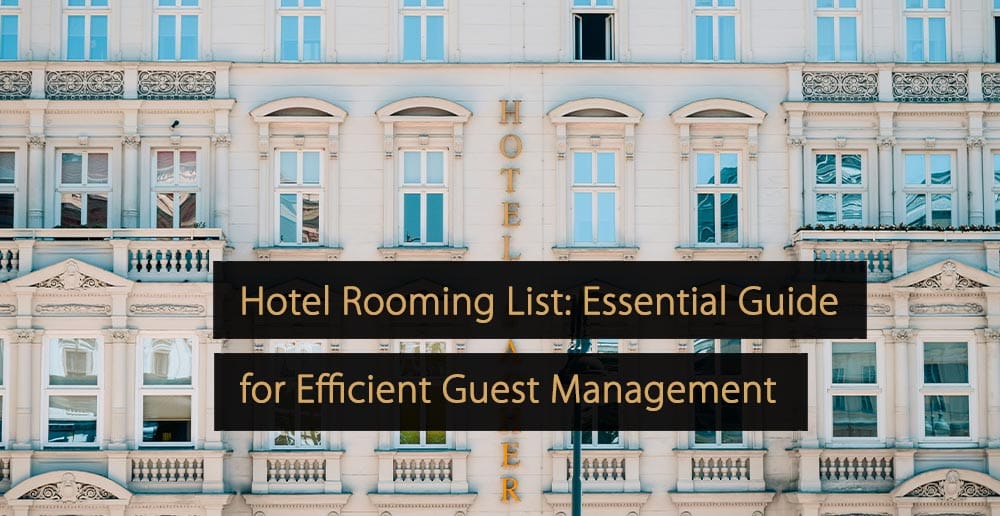
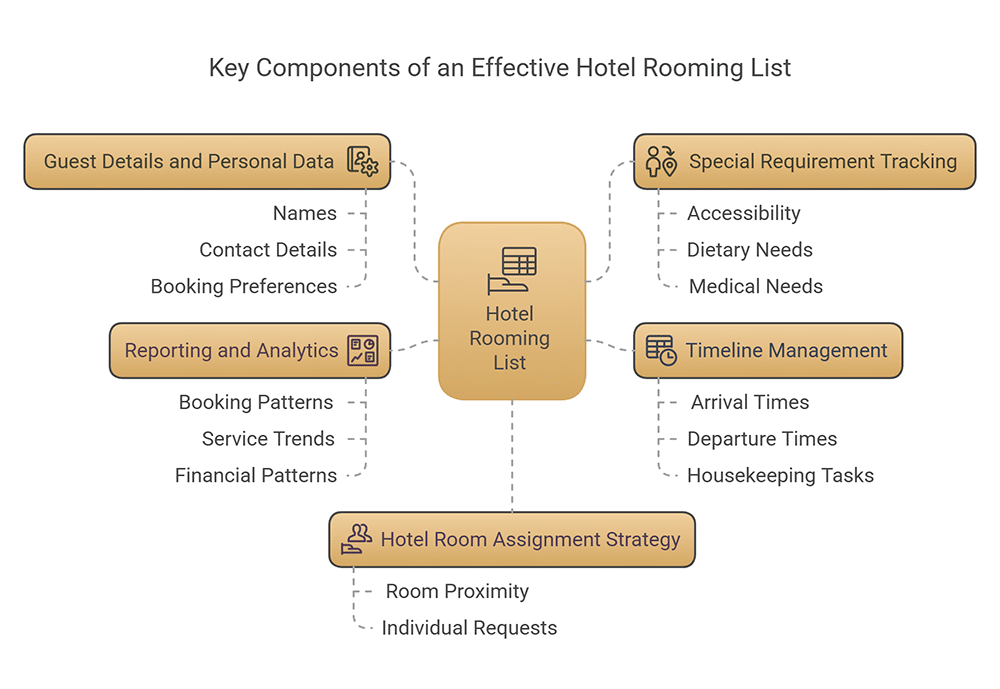
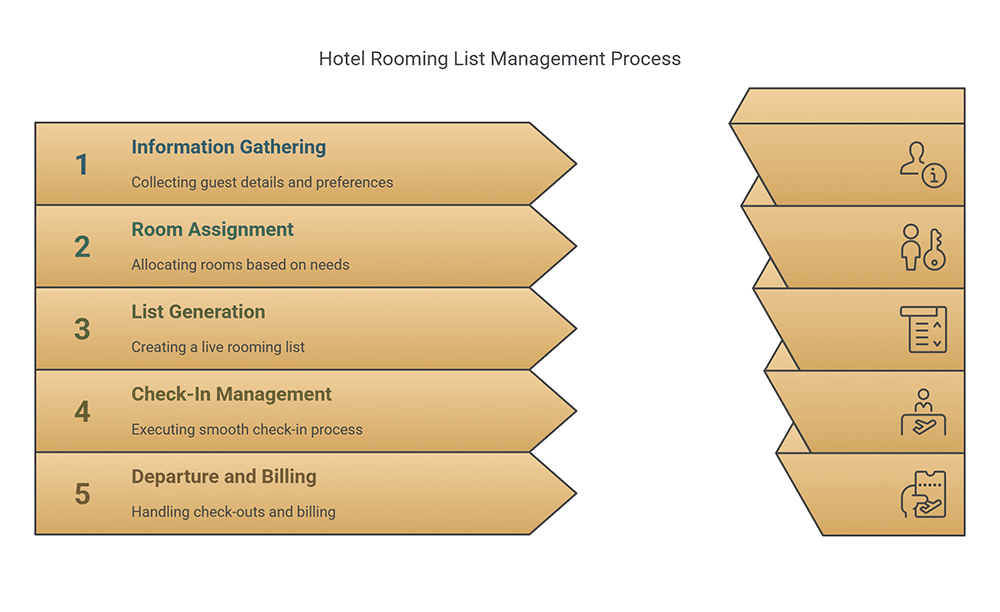




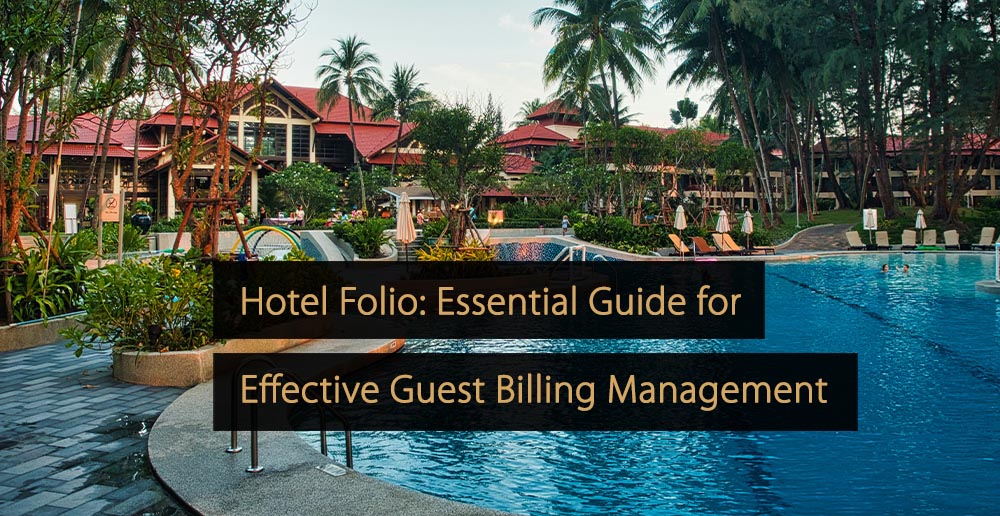
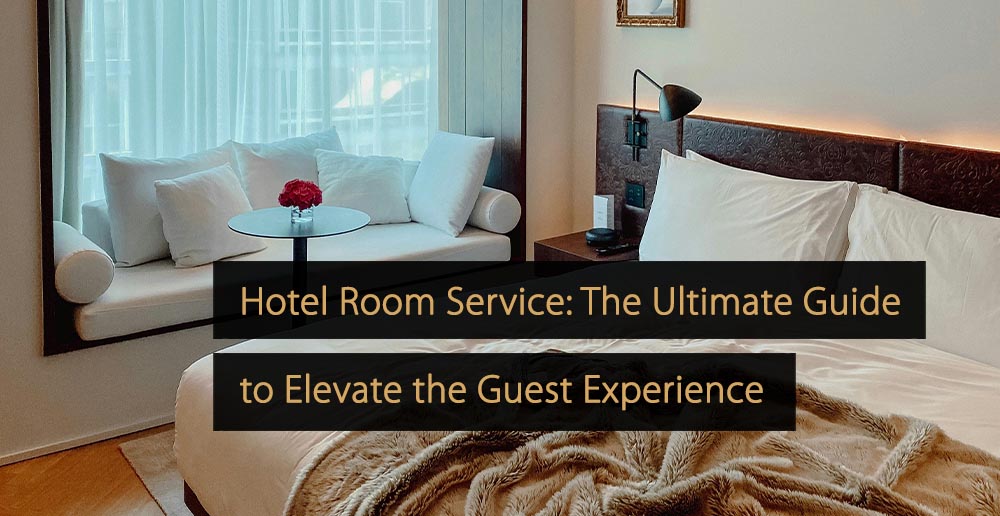

Leave A Comment